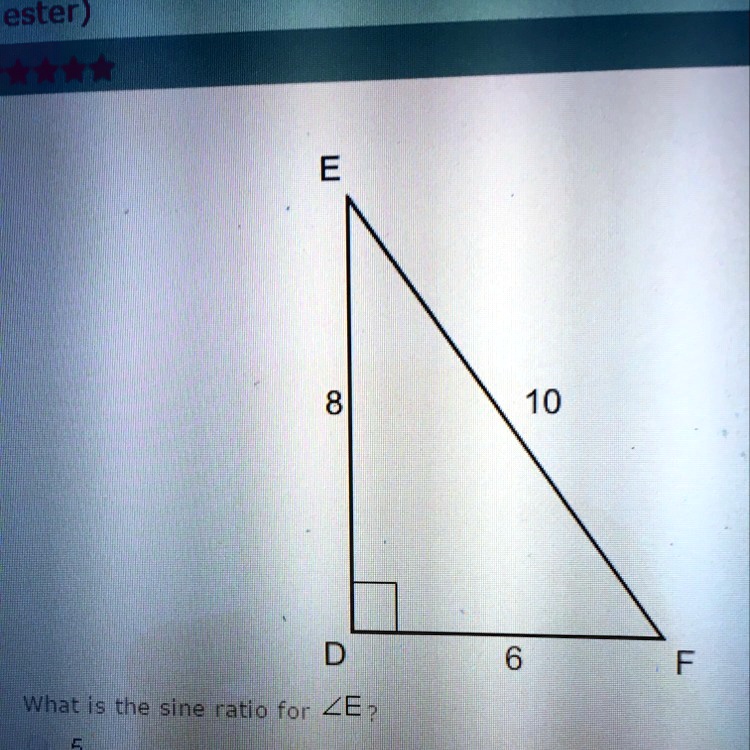The pythagorean theorem can be used to find the length of the hypotenuse in a right triangle. Right triangles are a fundamental concept in geometry.
The hypotenuse is the longest side of a right triangle, and it is the side that is opposite the right angle. To find the length of the hypotenuse, we can use the pythagorean theorem, which states that the square of the hypotenuse is equal to the sum of the squares of the other two sides.
In other words, if we know the lengths of the other two sides, we can use the pythagorean theorem to find the length of the hypotenuse. This formula is useful not only in geometry but also in many other areas of science and engineering.

Credit: www.numerade.com
The Basics Of Finding The Length Of Hypotenuse
To find the length of the hypotenuse, the pythagorean theorem is a fundamental equation. Using this theorem, you can easily calculate the length of the hypotenuse. It involves squaring the length of both legs, adding them together, and then finding the square root of the sum.
This will give you the length of the hypotenuse. However, there are also alternative methods for finding the length of the hypotenuse. For example, you can use trigonometric functions or the law of cosines. Understanding pythagorean theorem is essential for finding the length of the hypotenuse in any right triangle.
Pythagorean Theorem: An Effective Way To Calculate Hypotenuse
The pythagorean theorem is a useful mathematical equation for finding the hypotenuse of a right triangle. The theorem states that the square of the hypotenuse is equal to the sum of the squares of the other two sides of the triangle.
Therefore, to find the length of the hypotenuse, you can take the square root of the sum of the squares of the other two sides. For example, if the lengths of the two legs of a right triangle are 3 units and 4 units, then the length of the hypotenuse can be found by taking the square root of (3^2 + 4^2), which equals 5 units.
The pythagorean theorem has a range of applications in real-world scenarios, such as in construction, architecture, and navigation. Being familiar with this mathematical concept can be useful for solving everyday problems.
Trigonometry: Another Way To Find The Hypotenuse
Trigonometry is a branch of mathematics that deals with the study of the relationships between the sides and angles of triangles. It is a useful tool for finding the unknown sides or angles of triangles, including the hypotenuse of a right-angled triangle.
The sine, cosine, and tangent ratios are the three primary trigonometric ratios that are used to solve problems related to triangles. To find the hypotenuse of a right-angled triangle using trigonometry, you need to determine which of the three trigonometric ratios is relevant to the problem.
By using trigonometry, you can easily find the length of the hypotenuse without measuring it directly. Trigonometry is an essential field of study that has applications in various fields like architecture, engineering, science, and navigation.
Calculus For Finding Hypotenuse
The hypotenuse length can be calculated using calculus. By using integrals, we can derive a formula for finding the hypotenuse length. This equation involves the square root of a sum of squares, where the squares are the lengths of the other two sides of the right triangle.
With calculus, we can solve for this square root and find the length of the hypotenuse without needing to measure it directly. Using this formula, we can find the hypotenuse length for any right triangle, regardless of its size or orientation.
Calculus offers a powerful tool for solving problems in mathematics and beyond, providing a framework for understanding relationships between variables and functions and enabling us to analyze complex systems with precision and accuracy. By mastering the principles of calculus, we can develop an intuitive sense of the physical world and our place within it.
Frequently Asked Questions Of Which Equation Could Be Used To Find The Length Of The Hypotenuse?
What Is The Hypotenuse Of A Right Triangle?
The hypotenuse is the longest side in a right triangle, opposite the right angle.
Which Formula Is Used To Calculate The Hypotenuse?
The pythagorean theorem formula is used to calculate the hypotenuse of a right triangle. A² + b² = c²
How Do You Find The Length Of The Hypotenuse?
To find the length of the hypotenuse, you need to know the lengths of the other two sides and then apply the pythagorean theorem.
Can You Use Pythagorean Theorem To Find Any Side Of A Right Triangle?
Yes, you can use the pythagorean theorem to find any side of a right triangle as long as you know the lengths of the other two sides.
Why Is Finding The Hypotenuse Important?
Finding the hypotenuse is important in geometry and trigonometry because it is used to solve a variety of problems involving right triangles, such as finding the distance between two points on a graph.
Conclusion
Overall, we have explored two critical mathematical formulas that relate to finding the hypotenuse. The pythagorean theorem has historically been the go-to for finding hypotenuse length. However, the sine formula can be used when one angle measure and one side length are given.
While both formulas are correct and valid, it’s essential to recognize which is most applicable to the specific example you’re given to solve. For beginners, the pythagorean theorem might be the better starting point as it works well with right triangles.
Nevertheless, it’s always beneficial to know multiple methods to arrive at a solution. As with any math problem, practice makes perfect, so take the time to understand the concepts and familiarize yourself with these formulas. By doing so, you’ll be well-equipped to handle challenges in mathematics and gain a better understanding of trigonometry.
